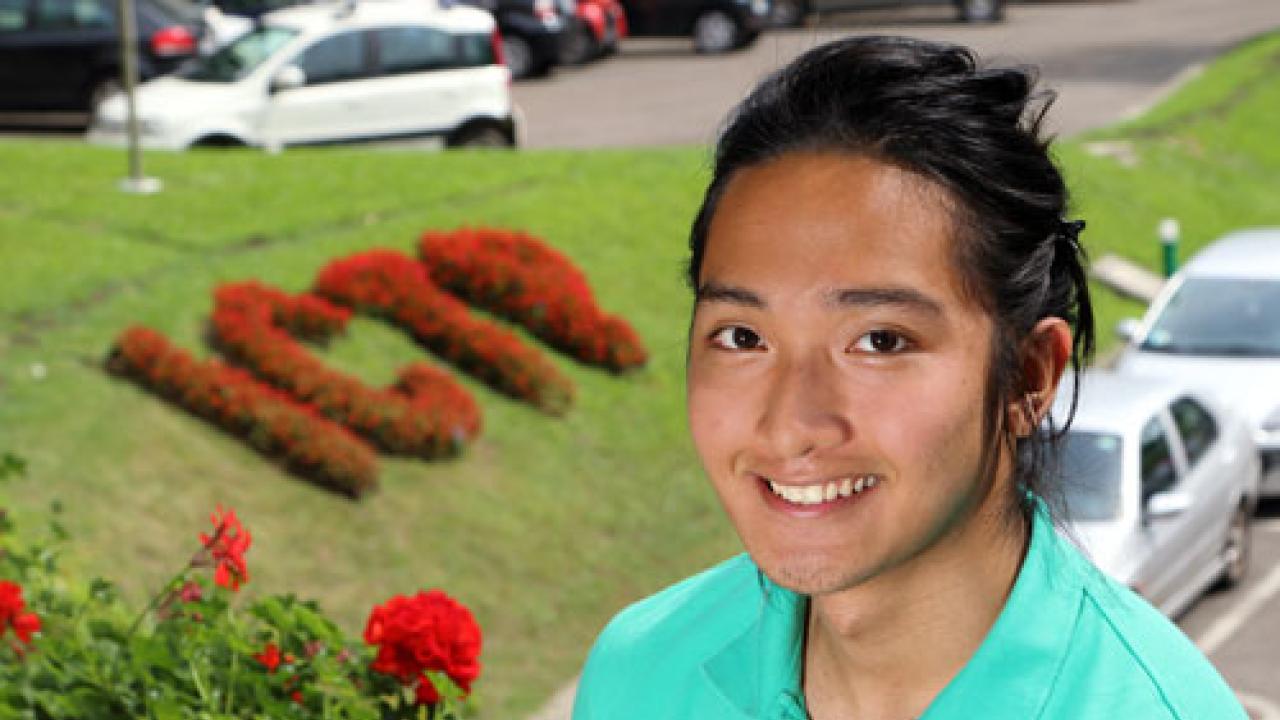
"I'm trying to understand what's going on inside the Earth," says John Keith Magali, ICTP Diploma student. Somewhat surprisingly, there is a lot still unknown about our home planet's interior life, and plenty of open questions for young geophysicists like Magali to investigate. The research is a bit more personal for Magali, who hails from the Philippines. The country is bisected by a massive seismic fault, and Magali aims to understand its dynamics, the key to preparing for potentially devastating earthquakes.
Magali is about to graduate from ICTP's Postgraduate Diploma Programme with a focus on Earth System Physics (ESP). ICTP's ESP research section encompasses both climatology and geophysics. Magali is doing his thesis on how Earth's tectonic plates, the surface layer of the planet, interact with the liquid mantle beneath the surface. Right below the rigid outermost layer of the Earth is a layer of highly viscous, partially molten rock called the asthenosphere. The heat, pressure, and convection in this layer create complex fluid dynamics that can affect how the tectonic plates move. These interactions are the subject of Magali's studies: focusing on the patterns of mantle flow underneath the surface of the earth. "The final product, of many peoples' work, will hopefully be a detailed image of the inside of the Earth, with a full mathematical picture of how the dynamics of the mantle affect plate movement and vice versa," says Magali. "Once we have a detailed picture of the Earth's interior, a lot can be learned from it; it can help minimize the uncertainty" surrounding earthquakes.
 Magali has earned a spot at the University of Lyon in Lyon, France, to continue these studies as a PhD student, an exciting step towards a career as a scientist. The first step was taken long ago, Magali says, when he was a small child. When his mother fetched him home from school every afternoon, their route went past a pharmacist's with a model of human organs in the window. Curiosity about the way humans work led Magali to want to be a doctor, before his interest in physics started blooming in secondary school. The final nudge from medicine to physics came when he was building electrical circuits in class: "My hands were shaking the whole time I was soldering, not good for a doctor," he laughs. "After that, I switched to physics."
Magali has earned a spot at the University of Lyon in Lyon, France, to continue these studies as a PhD student, an exciting step towards a career as a scientist. The first step was taken long ago, Magali says, when he was a small child. When his mother fetched him home from school every afternoon, their route went past a pharmacist's with a model of human organs in the window. Curiosity about the way humans work led Magali to want to be a doctor, before his interest in physics started blooming in secondary school. The final nudge from medicine to physics came when he was building electrical circuits in class: "My hands were shaking the whole time I was soldering, not good for a doctor," he laughs. "After that, I switched to physics."
Magali majored in applied physics at the University of the Philippines in Los Baños, and joined the junior faculty at Ateneo de Manila University after graduating with a bachelor's degree. He soon began to consider the possibility of advancing his knowlege: he found ICTP's Diploma program while searching online, and decided to apply. "I didn't apply anywhere else, and I had no expectations," says Magali. "But I got in, and that's when my life changed." He dove into geophysics. After having taken a class as a Masters student on geophysical fluid dynamics, he was fascinated, but hadn't taken any geology classes. He also had seminars in climate physics his first semester at ICTP, but he soon realized that he was more interested in the wave physics of earthquakes. Now, he's using computational modeling to study the kinematics—the mechanics of motion—of the fluid upper mantle inside the Earth. There's still a lot to know about how the mantle is driven to move and flow, says Magali, but it is strongly coupled with plate motion. "Given the motion of the plates, I work to reconstruct the kinematics of the flow in the fluid mantle beneath them and study how they affect the propagation of seismic waves."
Magali's home country of the Philippines is not only very vulnerable to earthquakes, but also to the effects of climate change, including extreme weather patterns. Accordingly, the government has been investing in critical infrastructure in order to address disaster risk and wide scale deployment of sensors for timely disaster information. However, the country lags behind its neighbors in investment in higher education or research. Life sciences and geosciences are some of the most common fields of study in the Philippines, a group of researchers that Magali would like to join.
"I want to give back," Magali says. Returning is a dream that a lot of Philippine scientists share, one that they are starting to act on in larger and larger numbers. "Even though the country lacks some resources, lots of scientists are returning to the Philippines after further education in other countries," Magali says. "I've always wanted to go back to the Philippines, once I have my PhD, once I'm a capable researcher," Magali says. "I want to be a scientist for the people, to be an eye opener, both doing basic research and taking it to the public."
------- Kelsey Calhoun













